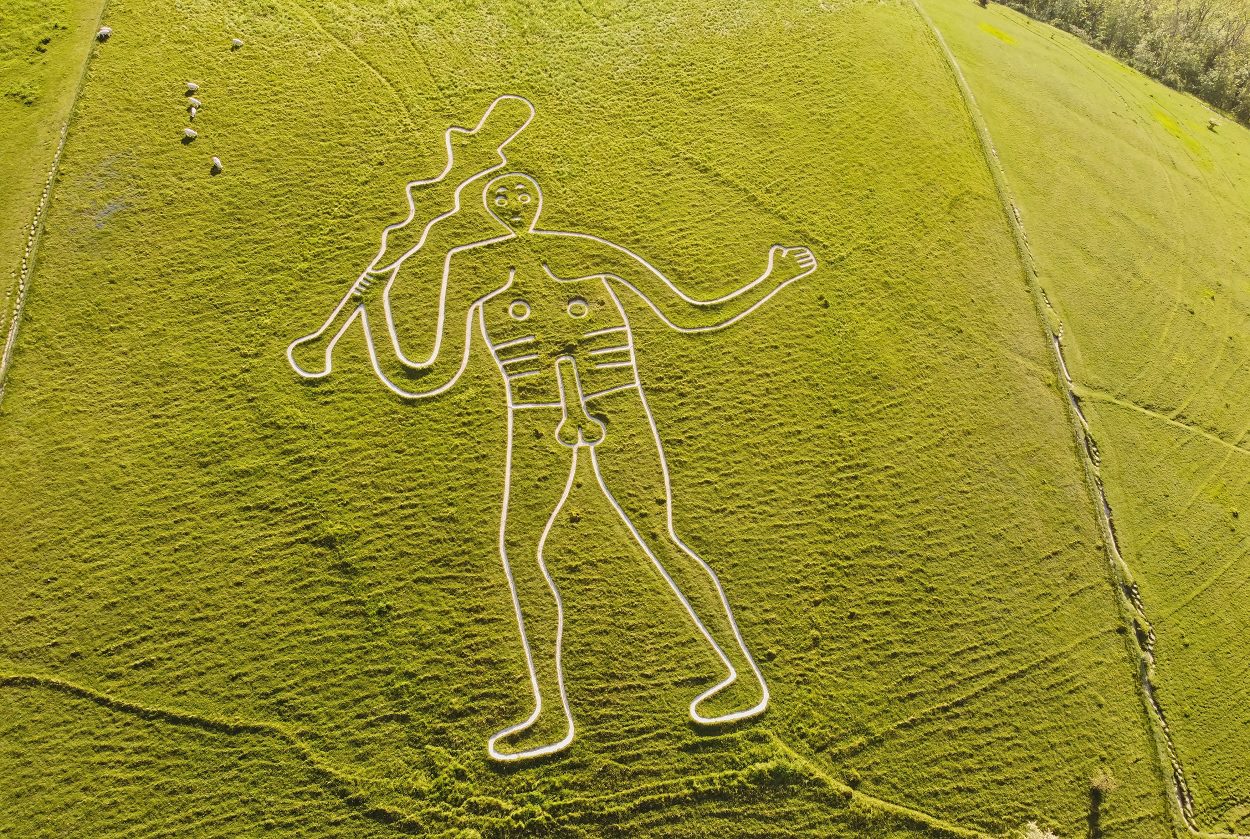Researchers from Oxford University suggest that the Cerne Abbas Giant depicts the image of Hercules, the Roman equivalent of the Greek divine hero Heracles, and served as a muster station for armies during the Saxon period.
The Cerne Abbas Giant is a 55 metre tall carved hill figure near the village of Cerne Abbas in Dorset, England. The origins of the giant has long been a mystery, with the earliest written record dating to the late 17th century.
The figure depicts a colossal naked man carrying a knotted club and has a line across the waist that has been suggested to represent a belt.
A study conducted in 1996 observed alterations in certain characteristics over time. It concluded that when originally carved, the figure had a cloak draped over its left arm and potentially held an object, speculated to be a severed head beneath its left hand.
Tests conducted by the National Trust in 2021 determined that the giant was carved in the Anglo-Saxon period between AD 700–1100, when the land was owned by the West Saxon royal family in the 9th Century and the 10th Century.
A further study by researchers from Oxford University now suggest that the figure depicts Hercules and was a muster station for West Saxon armies during a period when Saxon kingdoms were in conflict with invading Vikings.
According to the researchers, the giant’s position, protruding from a ridge and situated near major route ways, combined with nearby fresh water sources and the locality to a West Saxon estate made it the perfect mustering spot.
The study also suggests that the figure was reinterpreted as portraying Saint Eadwold by the monks at Cerne Abbey in a bid to lay claim to the saint’s relics. References to the giant are also alluded in an 11th-century manuscript housed at the British Library, which recounts the tale of a nearby hermit, Saint Eadwold, planting his staff atop the hill.
Dr Morcom, postdoctoral fellow at the University of Oslo, told the BBC: “Having a large, very obviously naked, pagan figure on your doorstep was an inconvenient fact for the monks and they engaged in a piece of intellectual interpretation, associating him with their patron saint, Eadwold.”
Header Image Credit : Shutterstock
Please take a second to click on the advert below. That one click helps to fund our journalism and enables us to continue providing articles on our platform completely FREE.







